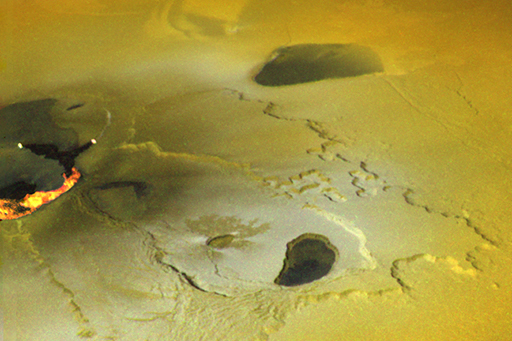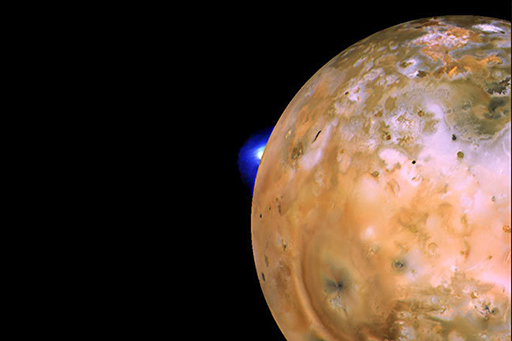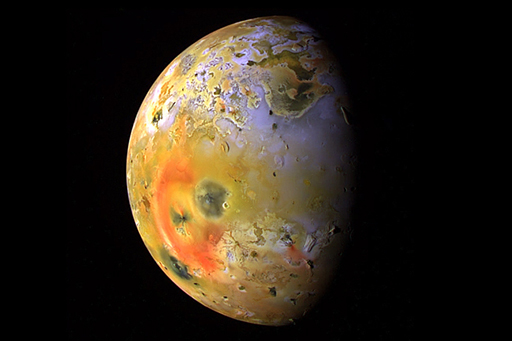1.2 Present volcanism on other moons

We know several moons in the Solar System to be volcanically active and see evidence in the form of recognisable surface deposits and by imaging of eruptions in progress.
Activity _unit4.2.1 What is driving Io?
Earth’s Moon froze long ago. What heat source could possibly be driving Io’s continuing volcanism, such as the eruption producing the plume visible on the left of this image, which is rising more than 100 km above the surface? Think back to the ‘Tidal heating explained’ video near the end of the first week.
Answer
Thanks to orbital resonance with Europa, the varying tidal forces on Io caused by the eccentricity of its orbit around Jupiter are so strong that Io’s tidal bulges rise and fall by up to 100 m during a single orbit, and also migrate to and fro a little. This distortion generates an immense amount of heat, fuelling the most volcanic body in the Solar System.


